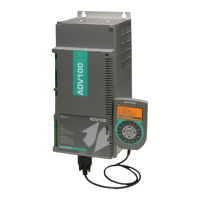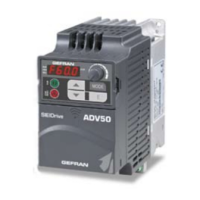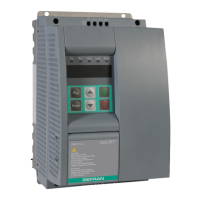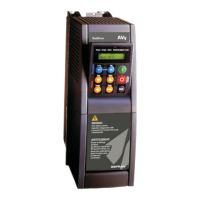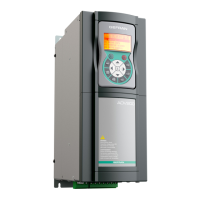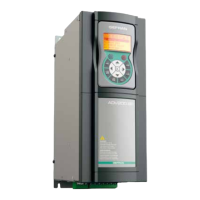56 ADV200 • Quick start up guide
5.3 Braking
There are various possible types of braking:
- via internal braking unit and external braking resistor (up to size ADV5550),
- via external braking unit (BUy, usable for all sizes),
- injection of direct current from the Inverter into the motor (DC braking),
- through a special overux function (AC braking) available if V/F control is
selected.
The various possibilities have the following key difference:
- Using a braking unit or the AC braking function it is possible to control a speed
reduction (for example form 1000 to 800rpm) while the DC braking can only
used to stop the motor.
- Using a braking unit the energy is dissipated into heat in the braking resistor
- Using the AC braking function or the DC braking function, the energy is dis-
sipated into heat in the motor windings (resulting in a further rise in the motor
temperature)
- By using the AC braking function in place of the DC braking, the braking action
is more efcient (more braking capability) and allows to maintain the same
speed control without introducing operational discontinuities. It means that the
AC braking allows the machine to change quickly its behavior from motorizing
to braking when required.
5.3.1 Braking unit
Frequency-regulated asynchronous motors during hyper-synchronous or regen-
erative functioning behave as generators, recovering energy that ows through the
inverter bridge, in the intermediate circuit as continuous current.
This leads to an increase in the intermediate circuit voltage.
Braking units (internal to drive or external BUy) are therefore used in order to pre-
vent the DC voltage rising to an impermissible value. When used, these activate a
braking resistor (external to drive) that is connected in parallel to the capacitors of
the intermediate circuit. The feedback energy is converted to heat via the braking
resistor (R
), thus providing very short deceleration times and restricted four-
quadrant operation.
Note! An optional BUy braking unit connected to terminals C and D can be used. For further details reference
should be made to the BUy manual.
Recommended combination braking resistors: see chapter “10.5 Braking resistor (optional)”, page 174.

